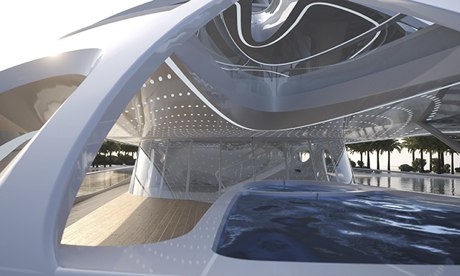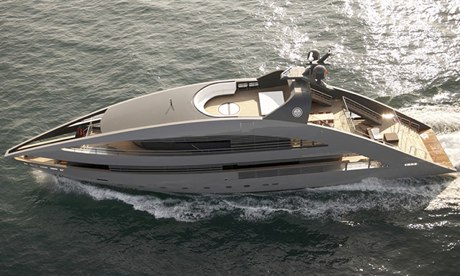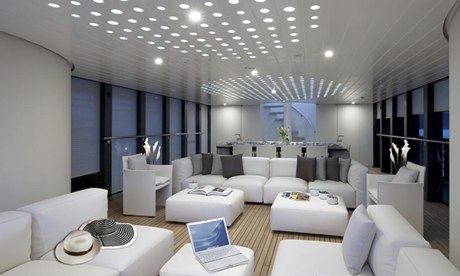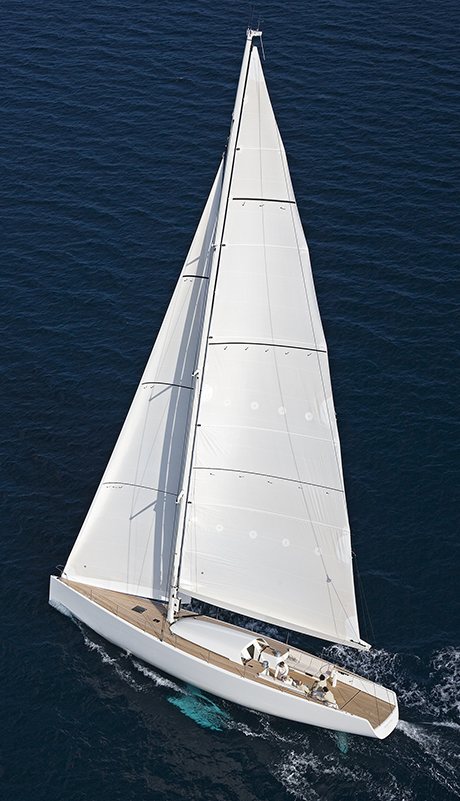Architects have a thing about boats. Look around your cities and you’ll see their nautical envy in every detail, from balcony decks with cruise-liner balustrades to sail-like canopies and the beloved porthole window.
Since Le Corbusier plastered images of gleaming ocean liners across the pages of his manifesto in 1923, urging architects to give their buildings the same sleek dynamism, he has been taken at his word. Some have interpreted it too literally: from Dubai’s Burj Al Arab hotel to Portsmouth’s bizarre Spinnaker Tower, there are entire buildings designed like sails, looking ready to make a break for the high seas.
Perhaps this maritime yearning comes from the fact that the boat represents everything the building is not. It is lithe and lightweight, free from the clumsy constraints of bricks and mortar. Their wires and rigs, bulwarks and pinrails, embody an escapist fantasy, removed from the slow and heavy things that weigh down the architect’s life of earthbound drudgery.
So what happens when the designer of buildings gets to dream up an actual boat? Recent evidence suggests it might not be such a good idea.
Zaha Hadid

Countless breakfasts were unduly dislodged earlier this month when images of Zaha Hadid’s superyacht burst on to our screens. Completing her collection of oligarchs’ accessories – which already spans everything from weaponised jewellery and challenging footwear, to stealthy hideouts in the forests of Russia – the queen of the curve has now applied her love of convoluted geometries to a floating gin palace.
Like a captured creature writhing in a tangle of ectoplasm, the 128-metre “concept yacht” is enveloped in a globular casing of interwoven sinews which frame big open holes – giving the ship a certain storm-damage chic.
“Whereas traditional yacht designs adhere to a strict horizontal order,” trumpeted the press release from boat-builder Blohm+Voss, “Hadid has created an intense connectivity between the various decks and elements of the design.” Or maybe someone sneezed all over the model before it was sent to the printers.
Can’t afford the superyacht? Fear not, the mothership comes with a “family” of five 90-metre baby yachts, for the aspiring tycoon.
Norman Foster

A midget by comparison, Norman Foster’s 40-metre Ocean Emerald was unveiled in 2009 as part of the YachtPlus fractional ownership programme – for those who dream of the Abramovich lifestyle but can only stump up €1.87m for the chance to spend 30 nights a year aboard the vessel.
Like a leaping dolphin caught mid-flight, the ship’s flanks arch upwards from bow to aft in a continuous curve, housing five spacious suites in its bowels. But if this is a dolphin, it is one that has had blacked-out windows and vents punched clumsily through its sides, giving it more the look of the backside of a data storage shed than a marine mammal.

Inside, it is a Foster gesamtkunstwerk – you can dine using Foster-designed cutlery and crockery while reclining on Foster-designed fabrics and being waited on by staff in Foster-designed uniforms. All that’s missing is Norm himself.
The interiors are muted beige affairs with a proliferation of white leather – although it is evidently a bit more Premier Inn than Ritz: “Light wood effect deckheads, faux leather and marble veneer give the impression of luxury,” say the manufacturers. If I’m paying €24m, I expect the real thing thanks.
Renzo Piano

This is more like it. A boat by a man who knows about boats – based in the port of Genoa, the Italian architect even builds them himself.
The smallest of all the superyachts at 18 metres, the Kirribilli is more convincing than many of Piano’s buildings, which often fall the wrong side of naff when they try too hard to be like boats.
“Nautical details are good details,” Piano told me when we met last year in his Astrup Fearnley Museum in Oslo, designed like a great sail crashing into the harbour, strapped down with endless amounts of rigging. “They have to be good, because they must survive the sea.” They just don’t make much sense bolted on to the facade of an art gallery.
In the Kirribilli, all is forgiven. Modelled on the J Class, which competed in the America’s Cup in the 1930s, it is designed around the functional requirements of going fast in water – as you might expect a yacht to be. While other architects opt for embellishment, Piano’s form is stripped back, leaving smooth, seamless surfaces, with a flush deck and simple interior, designed to allow a view of the structure from aft to fore.
John Pawson

Piano’s yacht may be stripped back, but no one can out-minimal the self-styled king of minimalism himself. John Pawson’s yacht designed with naval architect Luca Brenta, is an ode to whiteness. Its simple white sails hang above a white carbon-fibre hull, enclosing a shrine to wipe-clean whiteness within. Pawson’s role was mainly confined to the interior, where his trademark handleless cupboards and drawers provide the now ubiquitous modern kitchen game of find-the-door and its accompanying parlour trick of do-I-push-pull-or-slide-it?
A pair of plain day beds line either side of the galley living room, offering a dose of monastic asceticism for the over-indulged oligarch, looking for the simple life at sea.
There are no doubt plentiful pleasure caves hidden behind the white walls and wooden floors, furnished with gilded jacuzzis and Pawson-designed waiting staff – but you’ll be lucky if you can ever find them.
guardian.co.uk © Guardian News & Media Limited 2010
Published via the Guardian News Feed plugin for WordPress.

